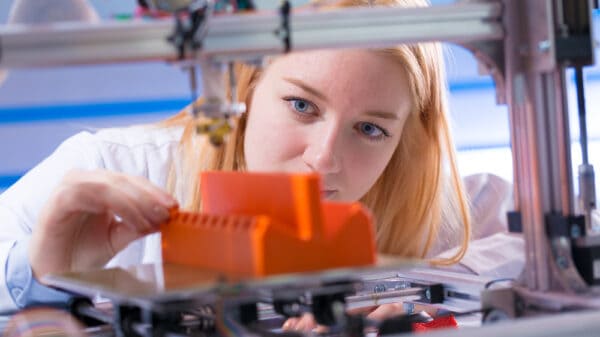In an era of technology-driven change, new and emerging innovations are increasingly being implemented to ease lives and make the benefits more accessible to people. From business decisions to crucial health care procedures, these innovations have changed the various aspects of the processes involved. One of these emerging technologies includes 3D printing.
3D printing has been here for quite a few years now and it has been creating massive waves in various kinds of businesses for all the right reasons. Also known as additive manufacturing, the process of 3D printing involves creating a product from raw materials by feeding the design into a printer designed for this purpose.
3D printing is one of those emerging technologies that is being implemented in various businesses including fashion, manufacturing, healthcare etc.
Mass Production and 3D Printing
Customers’ preferences have evolved with time. As a result, mass production based on a specific design no longer fits the different requirements of different customers. This is where 3D printing becomes relevant.
3D printing provides room for unlimited customisation possibilities. Traditional manufacturing techniques are not flexible enough for customer expectations. Customers can add tweaks to the designs according to their requirements and print out the final product from the comfort of their homes. Additionally, 3D printing also provides room for open-source collaboration which is one of the best methods to speed up bespoke production at low cost.
3D printing not only allows customers to personalise the products but also the materials they are made from. With traditional manufacturing, the intricacies and the tweaks in design increase costs of production considerably. Even though 3D printing is still in its nascent stage, the cost of production has been dropping over the years with the quality of products rising.
Production on a Local Level
With the boom in 3D printing, people no longer need to rely on vendors for the goods they need. Owing to various factors, bringing the process of production closer to the end user has become a plausible solution. Numerous 3D mobile apps are available for download that help users to design their products easily.
3D printing has turned out to be a bespoke method of manufacturing on a small scale. Additionally, the commercialisation of 3D printers and the popularity of maker movement has brought 3D printing to a more local level.
This will have a major impact on the supply chain. Manufacturers will have to adjust their business processes as manufacturing moves closer to the end user. As a result, the distribution process will become much simpler, quicker and cost-effective.
A Few Examples
Let’s take a look at some of the industries that have already started implementing the concept of 3D printing to drive personalisation.
Consumer Electronics
3D printing has been transforming how consumer electronics are being manufactured. Numerous platforms and applications are being developed to revolutionise the landscape of consumer electronics manufacturing.
For example, Optomec has been creating waves with their 3D printed consumer electronics. This company has been working with customers to determine the viability of the products. According to Ken Vartanian, vice president of marketing at Optomec, “We can print highly integrated antennas and sensors onto devices, making them smart, and able to connect to the Industrial Internet of Things. But it’s design software that lets designers build intelligence into parts. So design software has to be cognizant of what 3D printing can do, and how it can solve different design problems.”
Car Customisation
Nowadays, car buyers look for more choices in their transportations. With the help of 3D printing technology, automaker, Daihatsu is providing just the choices that customers want. Designers have created a library of 15 different ‘skins’ that can fit within the body shell on the rear end and the nose of the car to customise their cars.
Healthcare
The healthcare industry has had a lot to benefit from 3D printing. From artificial tissues grown in the laboratory to 3D printed pills, this technology has been quite popular in this industry. 3D printers are being used to create prosthetic hands that are customisable for as less as a few hundred dollars, thus making them much more accessible for patients.
The power of personalisation drives the popularity of 3D printing. With the highly successful implementations of this technology in various industries, the future for 3D printing is going to be bright.
Albert Smith is passionate about 3d Design service. He is a freelance architect and a property management consultant in West Palm Beach, Florida. You can find Albert’s articles on many property blogs and article directories. Currently he is writing on the progress of the technology developed by the touch screen company for property and architecture. Albert suggests his readers to follow icreate 3D for additional information on architectural animation.






















































































































































































